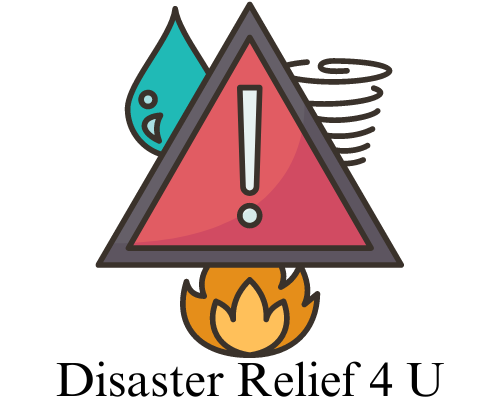Have you ever wondered how scientists can accurately measure the movement of lava during a volcanic eruption? Well, researchers have developed a groundbreaking field instrument that can do just that. This tool not only measures the viscosity of lava but also provides critical guidance for disaster response efforts to keep people safe. Let’s dive deep into how this new technology is revolutionizing volcanic monitoring worldwide.
Understanding the Importance of Measuring Lava Viscosity
Measuring the viscosity of lava is crucial in understanding how it flows during an eruption. By knowing the viscosity, scientists can predict the speed and direction of lava flow, which is essential for creating accurate evacuation plans and taking necessary precautions to protect communities at risk.
Let’s imagine you are in a situation where an active volcano is erupting nearby. Knowing the viscosity of the lava can help authorities determine how fast the lava will travel and which areas are at highest risk. This information can save lives and minimize the impact of the eruption on surrounding areas.
How Researchers Developed the Field Instrument
The groundbreaking field instrument developed by researchers is a significant advancement in the field of volcanic monitoring. This technology allows scientists to measure the viscosity of lava directly in the field, providing real-time data that was previously unavailable.
The instrument works by analyzing the flow behavior of lava as it moves across the surface. By measuring the resistance of the lava to flow, researchers can calculate its viscosity, giving them valuable insights into how the lava will behave during an eruption.
Improving Models of Lava Movement
One of the key benefits of this new instrument is its ability to improve models of lava movement. Traditional models of lava flow often rely on assumptions about the physical properties of lava, which can lead to inaccuracies in predicting its behavior.
With the data collected by the field instrument, researchers can refine these models to more accurately reflect the real-world conditions of a volcanic eruption. This can lead to more precise predictions of lava flow dynamics, allowing for better disaster response planning and risk management.
Real-world Applications of Improved Models
Imagine you are a scientist tasked with creating a predictive model for a volcano that is showing signs of unrest. By incorporating data from the field instrument into your model, you can accurately predict the path of lava flow and estimate how far it will travel.
This information is invaluable for emergency responders, who can use the model to plan evacuation routes, set up protective barriers, and coordinate relief efforts. The improved accuracy of these models can help save lives and infrastructure in the event of a volcanic eruption.
Testing the Instrument in Real-world Conditions
To ensure the reliability and accuracy of the field instrument, researchers conducted extensive testing in field conditions. One of the locations where the instrument was tested was in Iceland, known for its active volcanic activity and diverse lava flows.
During the testing phase, the instrument was able to capture changes in the physical properties of lava over time and space. This data provided valuable insights into the behavior of lava in real-world scenarios, validating the instrument’s effectiveness in measuring viscosity under dynamic conditions.
The Significance of Field Testing
Field testing is critical for validating the performance of any scientific instrument, especially one as complex as the lava viscosity meter. By conducting tests in actual volcanic environments, researchers can ensure that the instrument can accurately measure viscosity under varying conditions.
Imagine being part of the research team that traveled to Iceland to test the field instrument. You are standing on a rocky outcrop, watching as the lava slowly flows down the mountainside. The instrument beeps, indicating that it has successfully measured the viscosity of the lava. This moment is the culmination of months of hard work and scientific inquiry, confirming the instrument’s reliability in real-world conditions.
Refining the Instrument for Global Use
Building on the success of the field testing in Iceland, researchers are now focused on refining the instrument for global use. The goal is to deploy these instruments in volcanic monitoring stations worldwide, providing valuable data to scientists and emergency responders in regions prone to volcanic activity.
By refining the instrument, researchers can improve its accuracy, reliability, and ease of use, making it a valuable tool for monitoring and predicting volcanic eruptions. This technology has the potential to revolutionize volcanic monitoring on a global scale, enhancing our ability to protect communities at risk.
Collaborating with International Partners
Imagine being part of a research team that is collaborating with international partners to refine the field instrument for global use. You are participating in virtual meetings with scientists from around the world, sharing data and insights to enhance the instrument’s capabilities.
These collaborations are essential for ensuring the success of the instrument on a global scale. By working together, researchers can leverage each other’s expertise and resources to refine the instrument and maximize its impact on volcanic monitoring efforts worldwide.
Conclusion
In conclusion, the development of a groundbreaking field instrument to measure lava viscosity is a significant advancement in the field of volcanic monitoring. This technology has the potential to improve models of lava movement, provide critical guidance for disaster response efforts, and revolutionize volcanic monitoring worldwide.
As scientists continue to refine and deploy this instrument in volcanic monitoring stations around the world, we can expect to see more accurate predictions of volcanic eruptions, better disaster response planning, and enhanced protection for communities at risk. The future of volcanic monitoring is bright, thanks to this innovative field instrument.
